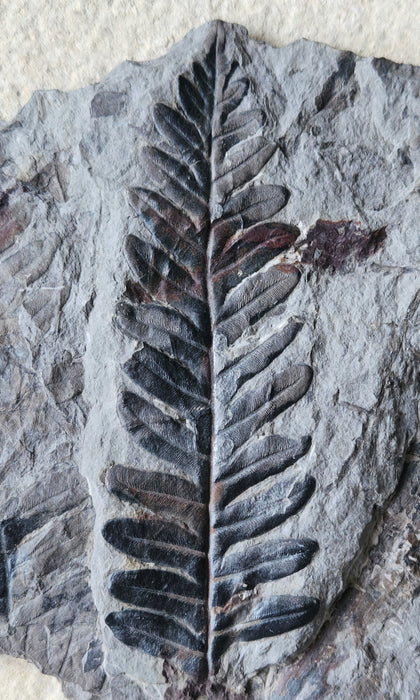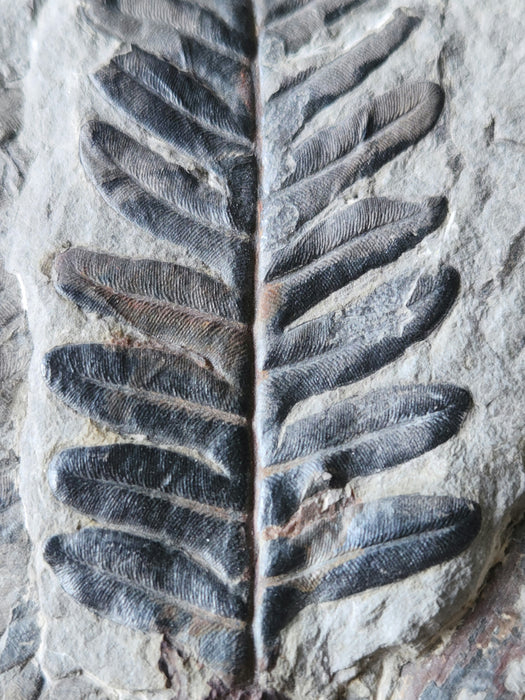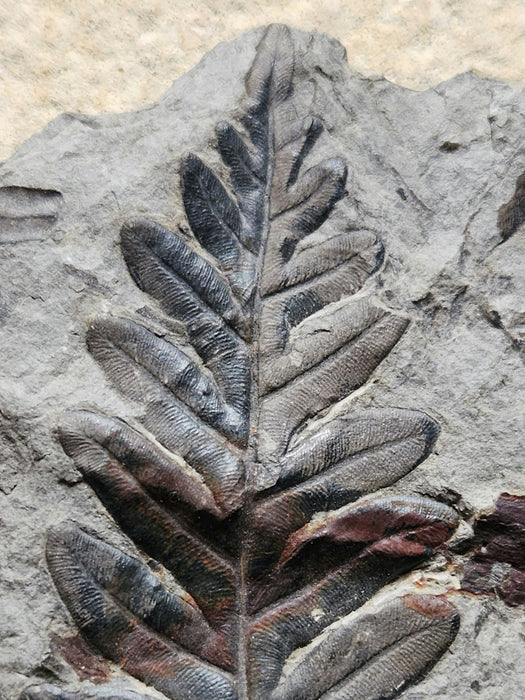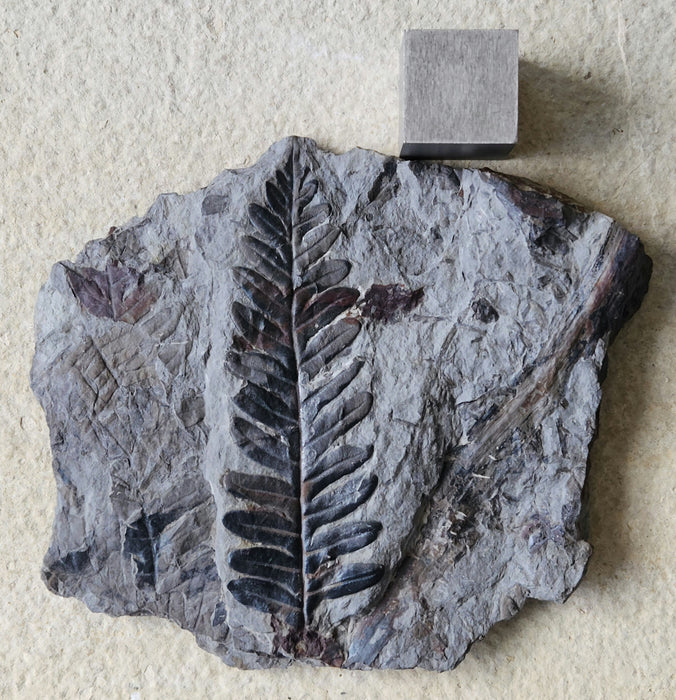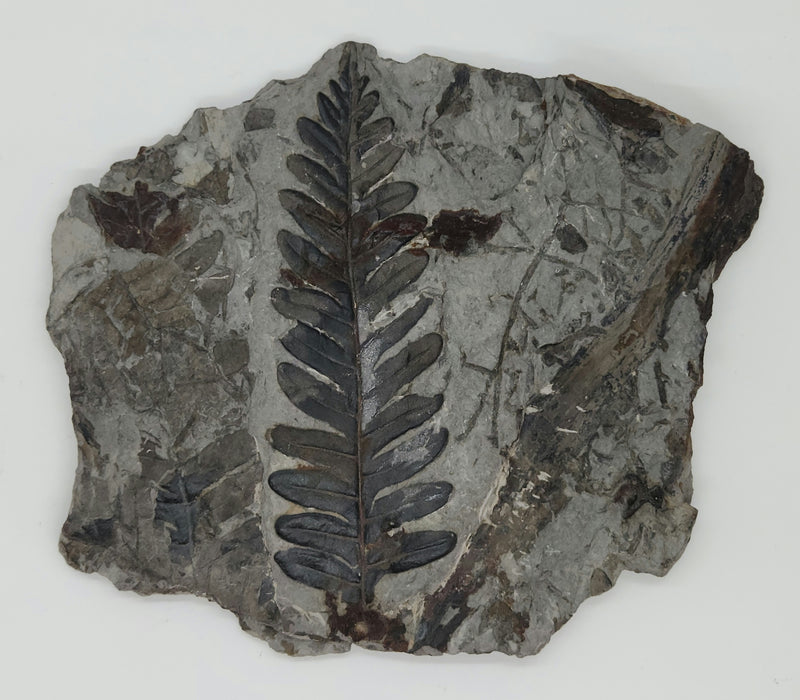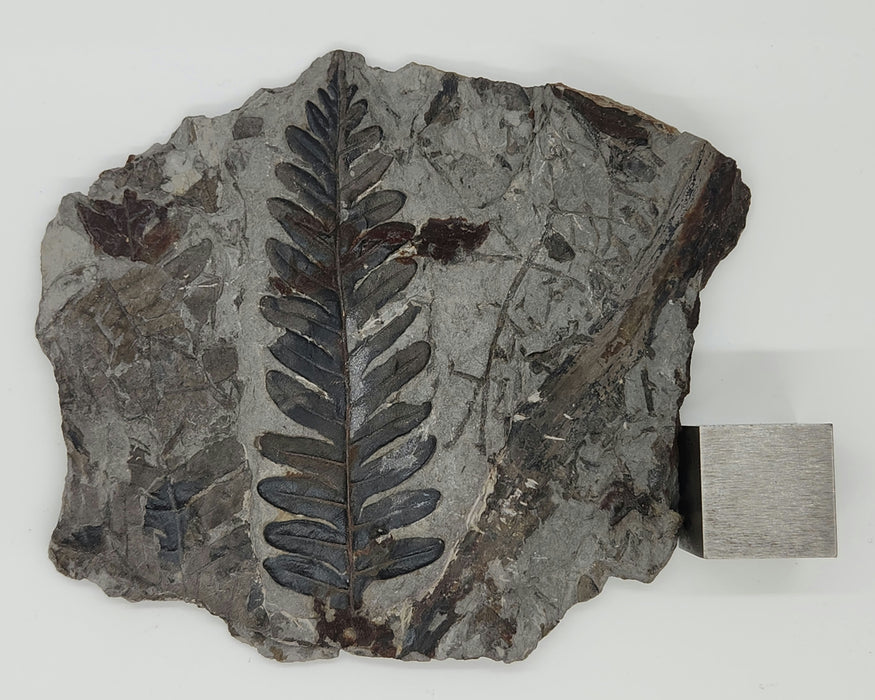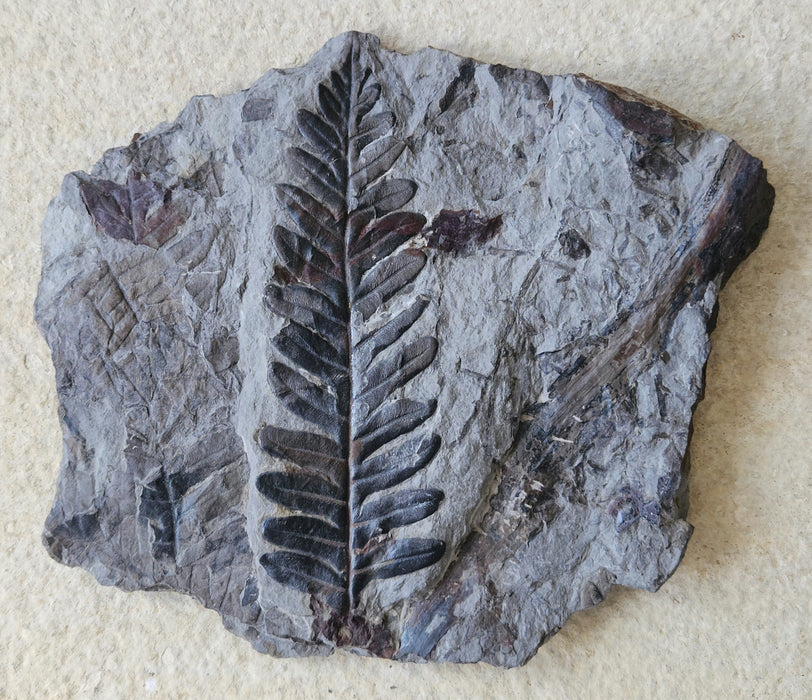
Fossil Fern | Callipteridium pteridium | Spain
Callipteridium pteridium
Late Carboniferous (~305 myo)
León Province
Spain
Fern approx. size: 4.5" long
Matrix approx. size: 5.75" x 5" x 0.5" at thickest part. Average thickness approx. 0.25".
Callipteridium pteridium is an extinct seed fern from the Late Carboniferous to Early Permian, known for large, finely divided fronds with distinctive vein patterns. Despite their name, seed ferns were not true ferns. They looked very similar, with large, leafy fronds, but they reproduced using seeds instead of spores.
Callipteridium pteridium grew in the lush coal swamps of the Late Carboniferous to Early Permian Periods, around 300 million years ago. Its fronds could grow more than a meter long, with leaflets that show a strong central vein and delicate side veins. These plants thrived in warm, humid climates and formed part of the dense forests that would eventually become the coal beds we mine today.
Seed ferns like Callipteridium are important to paleontologists because they reveal how plants were evolving new ways to reproduce, bridging the gap between spore-bearing ferns and the seed plants that dominate our world today.

